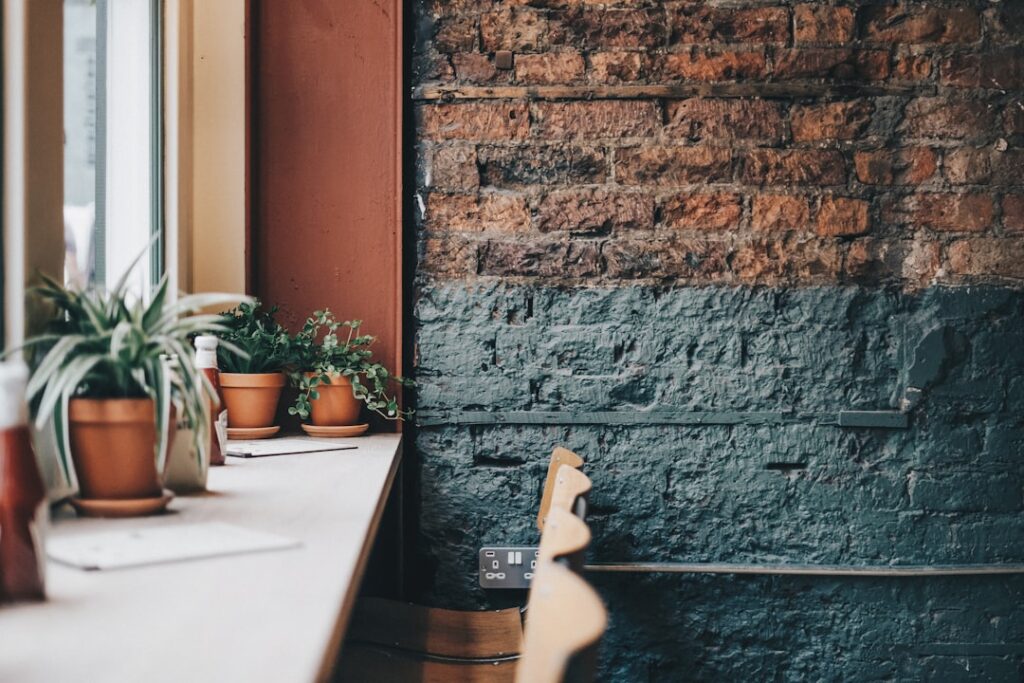The color palette of a space serves as its foundation, influencing not only the aesthetic appeal but also the mood and atmosphere. When selecting colors, it is essential to consider the psychological effects they can have on individuals. For instance, warm colors like reds, oranges, and yellows can evoke feelings of warmth and energy, making them ideal for social spaces such as living rooms or dining areas.
Conversely, cooler shades like blues and greens tend to promote calmness and relaxation, making them suitable for bedrooms or study areas. A well-thought-out color scheme can create a cohesive look that ties together various elements of the room while also reflecting the personality of its inhabitants. In addition to the emotional impact of colors, practical considerations should also guide the selection process.
The size and natural light of a room can significantly affect how colors appear. Lighter shades can make a small space feel larger and more open, while darker hues can add depth and intimacy to larger areas. It is also beneficial to consider the existing architectural features and furnishings when choosing a color palette.
For example, if a room has beautiful wooden beams or a striking fireplace, selecting complementary colors can enhance these features rather than overshadow them. Ultimately, the right color palette should harmonize with the overall design vision while catering to the functional needs of the space.
Key Takeaways
- Choose a color palette that reflects the desired ambiance and complements the overall theme of the space.
- Select comfortable and stylish seating options that encourage relaxation and social interaction.
- Incorporate warm lighting to create a cozy and inviting atmosphere.
- Add greenery and natural elements to bring a sense of freshness and tranquility to the space.
- Create a unique and personalized ambiance by incorporating personal touches and meaningful decor items.
Selecting Comfortable and Stylish Seating
Striking a Balance Between Style and Comfort
For instance, a plush sectional sofa may be perfect for a family room where relaxation is key, while sleek mid-century modern chairs could enhance a minimalist office space without sacrificing comfort. Moreover, the arrangement of seating plays a vital role in fostering interaction and flow within a room. In social settings, creating intimate conversation areas with strategically placed chairs and sofas encourages engagement among guests.
Seating Arrangements for Social Settings
On the other hand, in more formal environments, such as conference rooms or waiting areas, seating should be arranged to facilitate ease of movement while maintaining a professional appearance. The placement of seating in these areas can greatly impact the overall atmosphere and functionality of the space.
Adding Versatility with Different Seating Styles
Additionally, incorporating various seating styles—such as ottomans or poufs—can add versatility to the space, allowing for different configurations depending on the occasion. This can be particularly useful in multi-purpose rooms or areas where the seating needs may change frequently. By considering the various needs and functions of a space, it is possible to create a seating arrangement that is both functional and aesthetically pleasing.
Incorporating Warm Lighting
Lighting is an often-overlooked element that can dramatically transform the ambiance of a room. Warm lighting, in particular, creates an inviting atmosphere that encourages relaxation and social interaction. This type of lighting can be achieved through various sources, including table lamps, floor lamps, and wall sconces.
The use of dimmable fixtures allows for flexibility in adjusting brightness levels according to the time of day or activity taking place in the space. Layering different types of lighting is also crucial for achieving a well-lit environment. Ambient lighting provides overall illumination, while task lighting focuses on specific areas where activities such as reading or cooking occur.
Accent lighting can highlight artwork or architectural features, adding depth and interest to the room. By combining these different lighting elements, one can create a dynamic and versatile atmosphere that adapts to various moods and occasions. Furthermore, choosing warm-toned bulbs can enhance the overall warmth of the space, making it feel more inviting and comfortable.
Adding Greenery and Natural Elements
Incorporating greenery and natural elements into interior design not only enhances visual appeal but also promotes well-being. Plants have been shown to improve air quality and reduce stress levels, making them an excellent addition to any space. When selecting plants, it is essential to consider factors such as light availability and maintenance requirements.
For instance, succulents and snake plants are ideal for low-light environments and require minimal care, while ferns thrive in brighter spaces but may need more attention. Beyond traditional houseplants, natural elements can be introduced through materials such as wood, stone, and textiles. Wooden furniture pieces or accents can add warmth and texture to a room, while stone elements—such as a fireplace or countertops—can create a sense of grounding and stability.
Additionally, incorporating natural fabrics like cotton or linen in upholstery or curtains can further enhance the organic feel of the space. By blending greenery with these natural materials, one can create a harmonious environment that fosters a connection with nature.
Creating a Unique and Personalized Ambiance
Personalization is key to making any space feel like home. Infusing personal touches into interior design not only reflects individual tastes but also creates an emotional connection to the environment. This can be achieved through various means, such as displaying cherished photographs, heirlooms, or travel souvenirs that tell a story about the inhabitants’ lives.
These items serve as conversation starters while also adding character to the space. Another way to create a unique ambiance is by incorporating custom-made or artisanal pieces that resonate with personal style. Handcrafted furniture or decor items can add an element of exclusivity and authenticity that mass-produced items often lack.
Additionally, considering cultural influences in design choices can further enhance personalization; for example, incorporating textiles or patterns from one’s heritage can create a rich tapestry of influences that tell a story about identity and belonging.
Displaying Artwork and Decorative Accents
Artwork plays a pivotal role in defining the character of a space. It serves not only as decoration but also as an expression of personal taste and creativity. When selecting artwork for display, it is essential to consider scale and placement; larger pieces can serve as focal points in a room, while smaller works can be grouped together to create an engaging gallery wall.
The choice of frames and matting should also complement both the artwork itself and the surrounding decor. In addition to traditional artwork, decorative accents such as sculptures, vases, or unique collectibles can add layers of interest to a room. These items can be strategically placed on shelves, mantels, or tabletops to draw attention without overwhelming the space.
Mixing different styles—such as contemporary pieces alongside vintage finds—can create an eclectic look that feels curated rather than chaotic. Ultimately, displaying artwork and decorative accents should reflect personal style while enhancing the overall design narrative of the space.
Utilizing Textures and Fabrics
The use of textures and fabrics is crucial in creating depth and visual interest within an interior space. Different materials—such as wood, metal, glass, fabric, and stone—can be layered to create a rich sensory experience that engages both sight and touch. For instance, pairing soft textiles like velvet cushions with sleek leather furniture creates a dynamic contrast that adds sophistication to the room.
Fabrics play an essential role in defining comfort levels within a space. Choosing upholstery that feels inviting—such as soft cottons or luxurious silks—can enhance the overall experience of being in that environment. Additionally, incorporating various textures through rugs, throws, and curtains can help delineate areas within an open floor plan while adding warmth and coziness.
The interplay between different textures not only elevates aesthetic appeal but also contributes to creating an inviting atmosphere that encourages relaxation.
Implementing Functional and Organized Layout
A well-thought-out layout is fundamental in maximizing both functionality and flow within any interior space. The arrangement of furniture should facilitate movement while ensuring that each area serves its intended purpose effectively. For example, in a living room designed for entertaining guests, seating should be arranged in a way that encourages conversation without obstructing pathways.
Incorporating storage solutions is another critical aspect of creating an organized layout. Built-in shelves or multifunctional furniture—such as ottomans with hidden storage—can help maintain order while minimizing clutter. Additionally, considering how each area will be used throughout the day can inform layout decisions; for instance, placing workspaces near natural light sources can enhance productivity while creating inviting nooks for relaxation nearby fosters balance between work and leisure activities.
By prioritizing functionality alongside aesthetic considerations, one can create spaces that are not only beautiful but also practical for everyday living.
If you are looking to enhance the productivity and comfort of your café interior design, consider incorporating height-adjustable desks. These desks can provide flexibility for both customers and staff, allowing them to easily switch between sitting and standing positions. To further elevate the modern aesthetic of your café, you may also want to explore modern office furniture design. This article from officeinterior.ae offers insights and inspiration on how to create a sleek and stylish atmosphere. Additionally, optimizing workstation layout for productivity is crucial in a café setting. Check out this article on officeinterior.ae for tips on arranging your space to maximize efficiency and workflow.
FAQs
What is café interior design?
Café interior design refers to the layout, decor, and overall aesthetic of a café’s interior space. It encompasses the selection of furniture, lighting, color schemes, and other design elements to create a welcoming and comfortable environment for customers.
What are some key elements of café interior design?
Key elements of café interior design include seating arrangements, lighting, color schemes, decor, and the overall layout of the space. These elements are carefully chosen to create a cozy and inviting atmosphere for customers.
How does café interior design impact the customer experience?
Café interior design plays a crucial role in shaping the customer experience. A well-designed café can create a relaxing and enjoyable environment for customers, encouraging them to spend more time and return for future visits. It also contributes to the overall branding and image of the café.
What are some popular trends in café interior design?
Some popular trends in café interior design include the use of natural materials, such as wood and plants, to create a warm and organic atmosphere. Minimalist and Scandinavian-inspired designs are also popular, as well as the incorporation of technology and flexible seating options to accommodate different customer needs.
How can café interior design be tailored to different themes or concepts?
Café interior design can be tailored to different themes or concepts by incorporating specific decor, color schemes, and furniture that align with the desired theme. For example, a rustic café may feature vintage furniture and earthy tones, while a modern café may opt for sleek and minimalist design elements.




